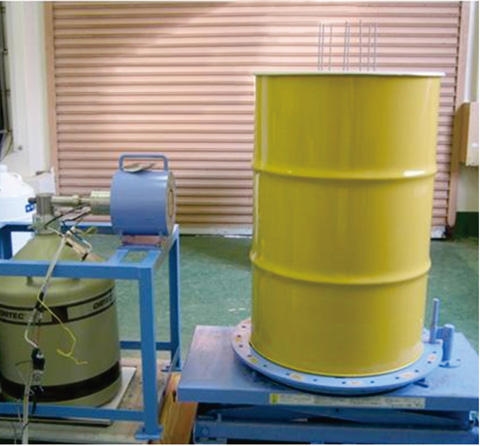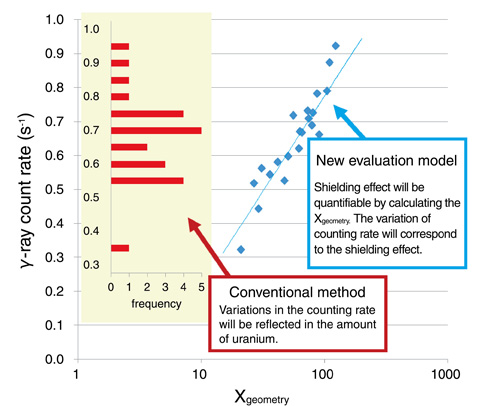
Fig.13-28 γ-ray measurement test using simulated waste

Fig.13-29 Comparison of conventional methods and the new model
It will be necessary to confirm the radioactive concentration of uranium-bearing wastes drums generated at nuclear fuels facilities to provide disposal validation. Although gamma- (γ-) ray measurement is expected to be used as the measurement technique, a correction for the effects of the heterogeneous waste distribution was needed.
During measurement of the uranium waste, the γ-ray counting rate will change significantly depending on the waste placement and distribution of uranium. For the same radioactivity, the γ-ray counting rate will vary greatly depending on conditions between the detector and the shielding from the radiation source. This is why the error is large.
We proposed a new theory on passive gamma assay for U-238 determination of uranium-contaminated waste drums. We also proposed a new evaluation function that yields a unique relationship between the source positions and γ-ray count rate. In equation (1), we define the shielding effect, where k is the emission ratio between two peaks, and R is the ratio of the two γ-ray counting rates.

According to this theory, regardless of the inhomogeneity of the waste matrix density or uranium source distribution, we can accurately determine the amount of U-238 contained in drums non-destructively using count rates of γ-rays of two energies (1001 keV and 766 keV) emitted from the U-238 progeny nuclide Pa-234m. The two γ-ray peaks (766 keV/1001 keV) are used to analyze the difference in the attenuation rate through matrices in this methodology.
We verified the theory by tests under various waste conditions using simulated waste drums (Fig.13-28). Tests were performed against various patterns of source distributions and matrices. The results verified the suitability of this methodology using plotting coordinates based on equation (1) (Fig.13-29). We estimated the relative error to be less than 20% and confirmed that this new assay system is efficient for the rational classification of uranium wastes requiring disposal. We plan to introduce this method to an existing measuring device. From now on, this methodology will be applied to the uranium determination measurements in order to improve their accuracy. Furthermore, this methodology has the potential for application to other measurements tools using nuclides with multiple γ-ray emission wavelengths.